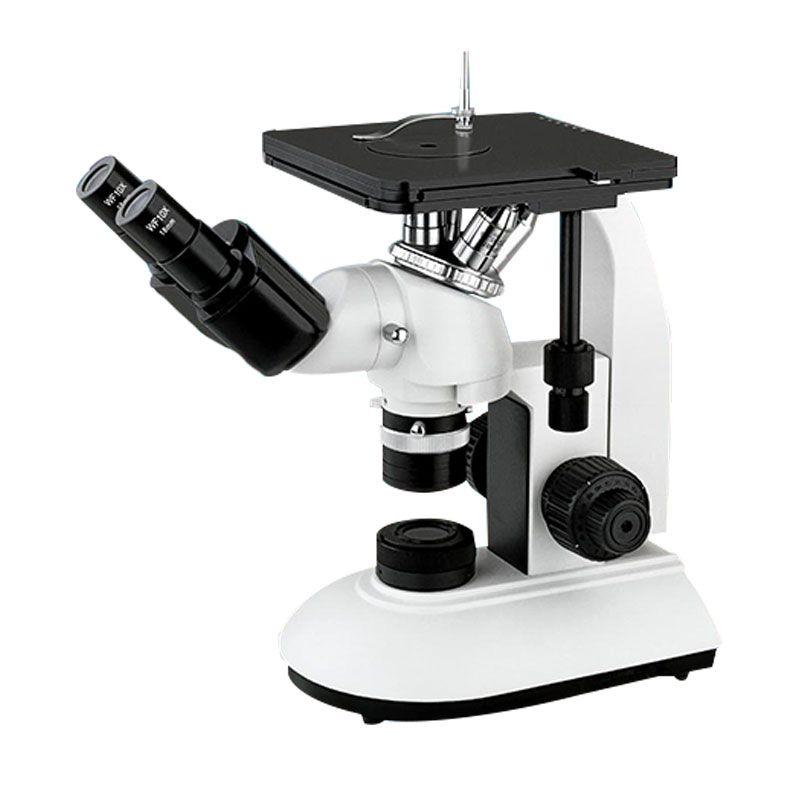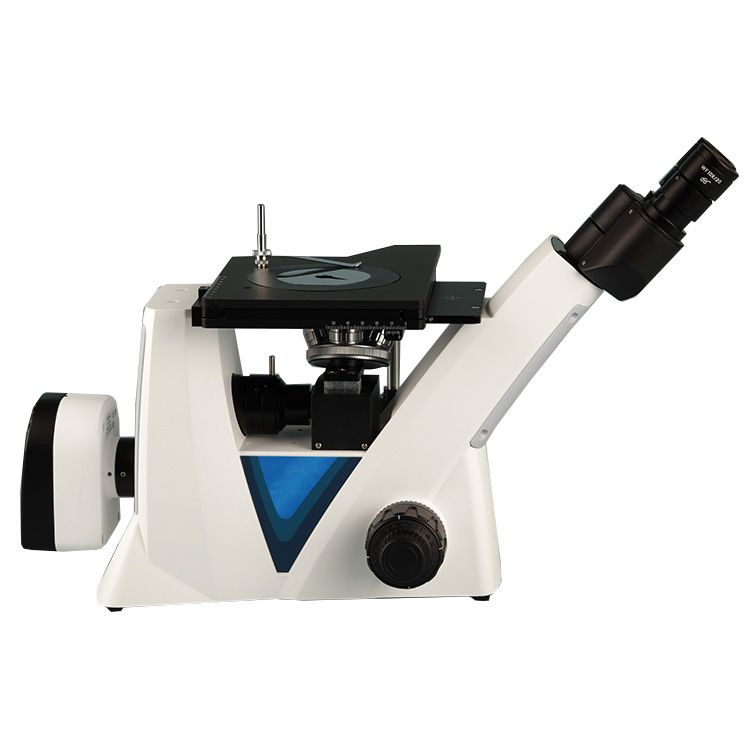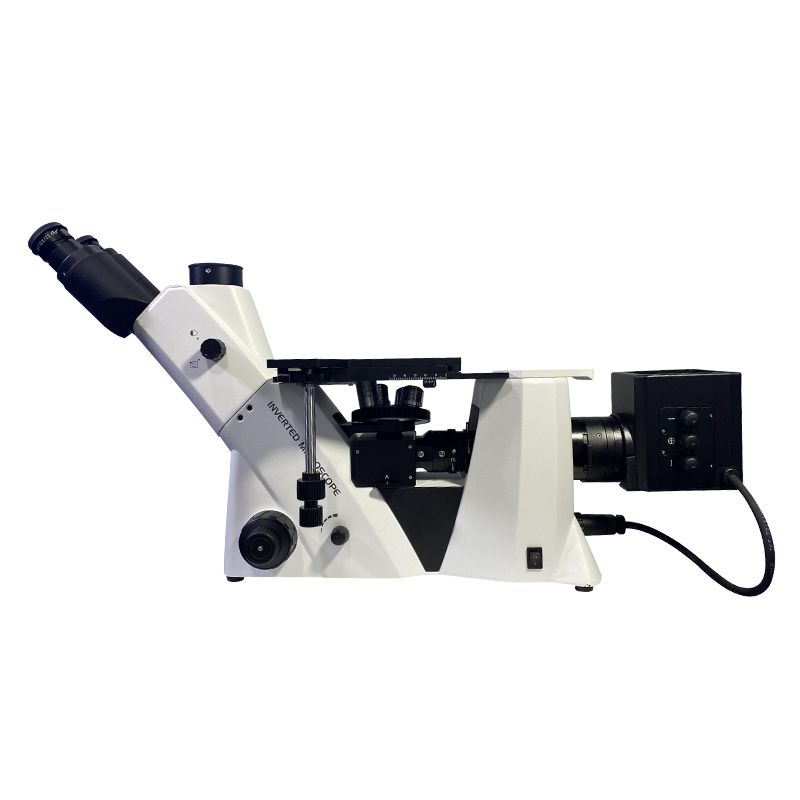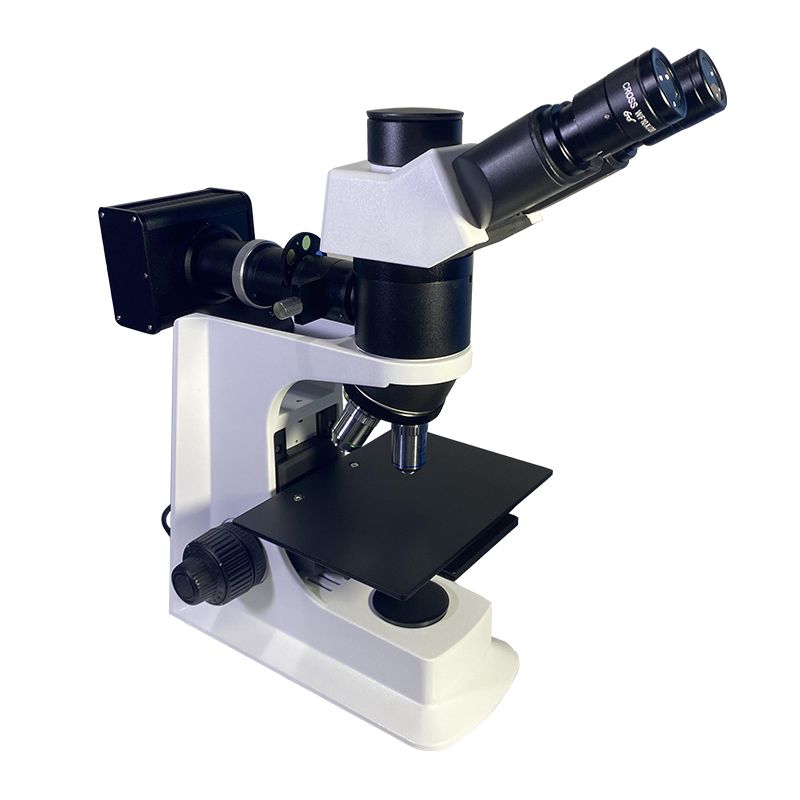The metallurgical microscope, also known as the metallographic microscope, is a type of optical microscope used to study the microstructure of metals and alloys. Metallurgical microscopes, unlike standard optical microscopes for biological samples, are designed to analyze opaque materials using reflected light rather than transmitted light. This powerful tool is essential in a variety of fields and applications, helping to advance material science, engineering, forensics, and many others. There is a guide to metallurgical microscope parts, troubleshooting, and maintenance tips.
Main Metallurgical Microscope Parts and the Function of Each Part
| Parts | Function | |
| Optical System | Eyepiece(s) | Magnifies the image formed by the objective lens. |
| Objective lens(es) | Collects light from the specimen and magnifies it. Different objectives offer varying magnification levels. | |
| Tube | Connects the eyepieces and objective lenses. | |
| Condenser lens | Focuses light from the illuminator onto the specimen. | |
| Aperture diaphragm | Controls the amount of light reaching the specimen, affecting image resolution and contrast. | |
| Reflector/Mirror | Directs light from the illuminator towards the condenser lens. | |
| Mechanical System | Stage | Holds the specimen and allows precise movement for observation at different locations. |
| Stage controls | Knobs that move the stage up/down, left/right, and front/back for precise positioning of the specimen. | |
| Focus knobs | Adjust the focus of the image by moving the objective lens or stage. | |
| Arm | Supports the optical system and connects it to the base. | |
| Base | Provides a stable platform for the microscope. | |
| Illumination System | Light source | Provides light for illuminating the specimen. Can be halogen, LED, or other types. |
| Filter holder | Holds filters to modify the light reaching the specimen, affecting color and contrast. | |
| Additional Features | Camera | Captures images of the specimen for documentation and analysis. |
| Image analysis software | Analyzes digital images of the specimen for measurements and other data. | |
Note: This table shows the most common parts of a metallurgical microscope. Some models may include additional features or have different designs.
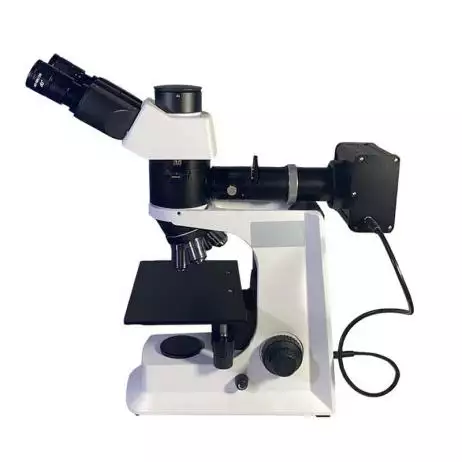
Common Troubleshooting Tips for Metallurgical Microscopes
| Problem | Possible Cause | Solution |
| Blurry or unclear image | Dirty lenses Incorrect focus Misalignment Improper illumination Wrong objective lens | Clean lenses Adjust focus Check alignment Adjust illumination Use appropriate objective lens |
| Uneven illumination | Miscentered condenser lens Dirty condenser lens Improper field diaphragm adjustment | Center condenser lens Clean condenser lens Adjust field diaphragm |
| Low contrast | Incorrect condenser height Improper filter selection Dirty objective lens | Adjust condenser height Use appropriate filter Clean objective lens |
| Focus knobs are loose or unresponsive | Loose screws Internal damage | Tighten screws Seek professional repair |
| Light source not working | Burned-out bulb Blown fuse Damaged power cord | Replace bulb Replace fuse Check the power cord |
Additional Tips
- Consult the user manual: It may include specific troubleshooting and maintenance procedures for your microscope model.
- Use proper cleaning techniques: Avoid using harsh chemicals or abrasive cloths on sensitive optical parts.
- Store your microscope properly: Store it in a clean, dry place when not in use.
- Perform regular maintenance: Ensure lenses and stage parts are regularly cleaned and moving parts are lubricated as recommended.
- Seek professional help for complex issues: If basic troubleshooting fails, seek professional help for repair or diagnosis.
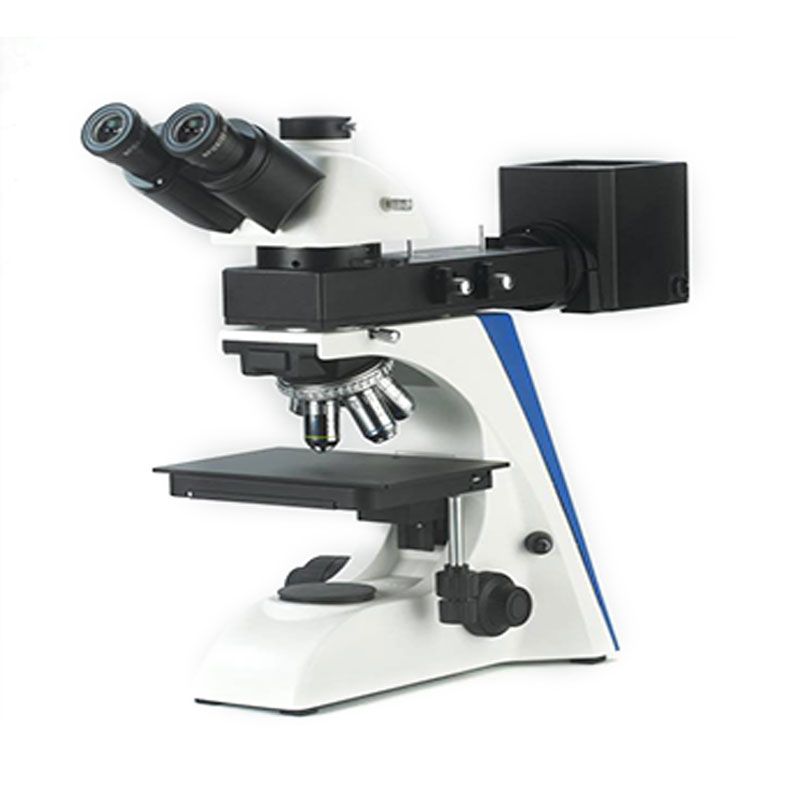
Tips for Maintaining Metallurgical Microscopes
| Maintenance Task | Frequency | Instructions |
| Clean lenses and eyepieces | Daily | Use lens-cleaning tissue and appropriate cleaning solutions designed for optics. Never touch lenses with bare fingers. |
| Clean the stage and other surfaces | Weekly | Remove dust and debris with a soft brush or microfiber cloth. Avoid using harsh chemicals or abrasive cleaners. |
| Clean the condenser lens | Monthly | This lens is delicate, so use lens cleaning paper and appropriate solutions. Refer to the manufacturer’s instructions for specific cleaning procedures. |
| Lubricate moving parts | Every 6 months | Consult the user manual for specific lubrication points and recommended lubricants. Do not over-lubricate, as this can attract dust and debris. |
| Check alignment periodically | Annually | Ensure the optical parts are properly aligned. This may require professional calibration at regular intervals depending on usage. |
| Replace bulbs and fuses | As needed | Follow the manufacturer’s instructions for replacing burned-out bulbs and blown fuses. |
Additional Tips
- Handle the microscope with care: Avoid rough handling and bumping the instrument.
- Never force adjustments: If a knob or lever feels stiff, consult the manual or seek professional assistance.
- Use appropriate power cords and outlets: Ensure the power source is stable and suitable for the microscope’s requirements.
- Keep records of maintenance: Clean, lubricate, and repair the microscope.
- Consult the user manual: It is your primary source for detailed care and maintenance instructions for your specific microscope model.
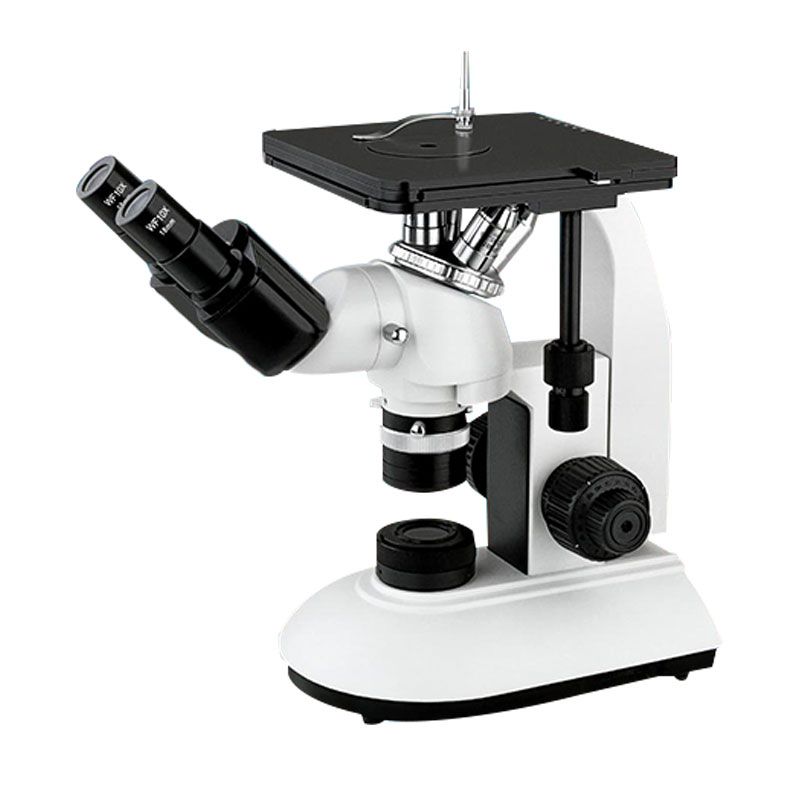
Conclusion
Metallurgical microscopes are essential tools for studying the microstructure of metals and alloys. Knowing it doesn’t only get the metallurgical microscope price or observation methods, but also important to learn its parts, troubleshooting, and maintenance tips. They are made up of several parts, including eyepieces, objectives, a stage, a condenser, and an illumination system. Each part has a specific role in producing clear, high-quality images. Identifying these functions enables you to use the microscope effectively and efficiently. Blurred images, uneven illumination, and low contrast are all common problems with metallurgical microscopes. Troubleshooting is more than just resolving immediate issues; it is also about preventative maintenance, efficiency, safety, and preparing you to become a confident and proficient user of this valuable tool. Maintenance tips for metallurgical microscopes include cleaning lenses and eyepieces on a regular basis, checking alignment, and lubricating moving parts. Proper care and maintenance can help the microscope perform optimally and last longer.
